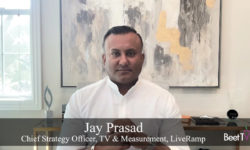As more households connect their televisions to the internet and choose among hundreds of CTV apps to watch, television’s mass audience is becoming more fragmented than ever before. In many ways, CTV resembles other kinds of digital media, offering a wider variety of brands a way to not only introduce themselves to viewers, but also to entice them to take action.
“Because connected television advertising uses the same kind of plumbing and wiring that we associate with paid search and social, advertisers are already today using it to drive some of the same mid- to lower-funnel outcomes that you would expect,” Matt Collins, head of product marketing at marketing platform MNTN, said. “That would include things like website visits, revenue, return on ad spend and incrementality.”
In addition to quicker access to metrics, CTV offers advertisers of all sizes to run campaigns — everything from smaller disrupter brands to major household names.
“One of the exciting things about the trends that I see in our space is the democratization of access to these tools,” Collins said. “We’re seeing it in smaller advertisers, midsize advertisers, even B2B, are all getting in on the game.”
CTV also has the power of traditional television advertising to deliver emotion and dramatize more about a brand.
“It’s still a lean-back medium, it’s still the biggest canvas in the home, and so it’s still very well suited for driving or producing great brand stories, and marketers can still get that benefit,” Collins said. “At the same time, with changes in technology and some other approaches…they can also get performance, too, which makes not only the CMO happy, but also the CFO happy.”
You are watching “Driving Audience Strategies with CTV Performance Data,” a Beet.TV Leadership Series Presented by MNTN. For more videos, please visit this page.



































